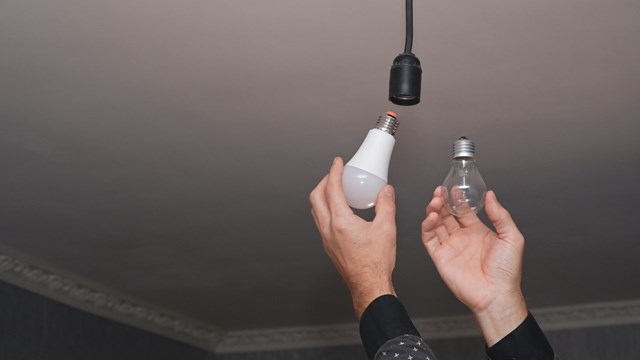The Internal Revenue Code’s Section 216 authorizes cooperative apartment owners to receive a pass-through tax deduction for their proportionate share of the mortgage interest and real estate taxes paid by a qualifying co-op corporation. One of the qualifying tests is the requirement that 80 percent or more of the gross income of the cooperative in each taxable year is derived from the tenant-shareholders. Real estate commercial rents in recent years have caused many co-ops to be in jeopardy of failing to qualify under Section 216, because commercial rents received by cooperatives that are situated in commercially zoned areas are increasing to such an extent that many buildings are or will soon be receiving too much income (more than 20 percent) from these non-qualifying sources, and because it is very difficult for a cooperative to divest itself of these income sources without creating additional tax problems and other problems both financial and non-financial.
Congressional Intentions
The predecessor to Section 216 was passed by Congress in 1942 with the intention of placing co-op apartment owners on the same footing as private homeowners with respect to homeowner deductions for mortgage interest and real estate taxes. Viewed broadly, the statute is part of a continuing public policy to encourage people to own their own homes, and is intended to place urban residents of multiple dwellings on a similar footing to suburban and rural residents of private homes. According to Joel E. Miller, a tax lawyer specializing in the income taxation of cooperatives and condominiums, because in a cooperative the real estate is owned by a corporation, rather than directly by individuals, Congress wanted to ensure that the apartment corporation was a bona-fide housing cooperative, providing benefits to tenants who are shareholders, and was not being used to shelter income from unrelated types of commercial activity. Accordingly, Congress included a number of tests in Section 216 designed to insure that a cooperative apartment corporation was exactly that. The requirement that 80 percent of the income be from tenant-shareholders appears to have involved an arbitrary number selected by Congress in 1942, and there is no apparent rationale as to why the limit should be 80 percent rather than some other number, in order to prevent the corporation from being used as a front for economic activities unrelated to residential housing.
The penalty for a cooperative that exceeds 20 percent of income derived from sources other than tenant- shareholders is that all tenant-shareholders lose all of their homeowner deductions with respect to their apartments for the tax year in which the cooperative fails to meet the test, even if the cooperative’s income is over by as little as $1. This is sometimes called “falling off the 80/20 cliff.” According to Mary Ann Rothman, executive director of the Council of New York Cooperatives & Condominiums (CNYC), loss of the deduction can anger shareholders “big time.”
Sponsor Defaults
The fear of Congress that a cooperative housing corporation might be used as a front for unrelated commercial activity does not appear to have been born out over time. Cooperatives have run into trouble with the 80/20 test in two general types of situations. In one scenario, the co-op sponsor defaulted on its maintenance payments. The typical reasons why sponsors defaulted were that they mortgaged the unsold units for such a high value that the mortgage payments could only be satisfied by sales of the units. In the recession and consequent declining market of the late ’80s and early ’90s this in many instances proved to be foolish both for the banks and the sponsors involved, and for the cooperatives that were the victims of this excessive optimism. In many instances the cooperatives were forced to foreclose on the sponsor’s units and take them over as rental units. Unfortunately, the rent received from these units is not deemed to be derived from tenant-shareholders, and was therefore “bad income” with respect to the 80/20 test. If the foreclosure involved more than 20 percent of the units, the innocent victims, cooperative shareholders, were in jeopardy of losing their tax deductions.
The legal community was able to craft a response to this problem by establishing a separate corporation which would sign proprietary leases for the shares and thus become a tenant-shareholder, and by assigning the foreclosed apartments to the separate corporation. The income from the separate corporation would then be derived from a tenant-shareholder, and the cooperative would again qualify under 80/20. It is evident that the application of the 80/20 test to this situation, however much it may be required by the language of the test, had no relevance to the purpose of Congress in attempting to prevent the cooperative from being used to shield improper commercial activity from income tax.
Increasing Real Estate Values
The second current scenario that causes cooperatives to run afoul of the 80/20 test arises from commercial rent paid by the ground floor or basement portion of the building owned by the cooperative. This situation typically arises in cooperatives that are situated on commercial avenues (e.g Lexington Avenue, Broadway, Queens Boulevard, Jerome Avenue) or major commercial streets (e.g 86th Street or many of the streets in downtown Brooklyn or Manhattan) where the area is zoned for commercial purposes, and ground floor spaces are configured for commercial or garage uses. The rent received from the commercial stores or garage is not deemed to be income derived from the tenant-shareholders, unless, with respect to a garage, the income is received directly from a tenant-shareholder.
There is a popular conception that the 80/20 problem is a “Park Avenue” problem, and only applies to the super wealthy. Even a moment’s reflection reveals that this perception is not correct since the most expensive residential areas (e.g. Park Avenue, Fifth Avenue, Central Park West) are not commercially zoned, and residents of those avenues are not affected by this problem.
What has happened as a result of recent economic conditions is that the rental value of the stores and garage has escalated enormously over the last several years, as have real estate values in general. If a cooperative has continued to receive market rents from its commercial space, it is likely under current economic conditions to find its commercial income bumping up against the 20 percent level, if not substantially exceeding it.
Accountant Mark Shernicoff of the firm Zucker & Shernicoff, states that the problem has been unintentionally exacerbated by the real estate tax abatements to cooperatives given by the City of New York in an attempt to establish real estate tax fairness. The rebate of the real estate taxes to the cooperative must be returned to the tenant-shareholder, and must be treated as a reduction in income received from the tenant-shareholder. This decreases the “good income” available to offset the “bad income” received from the commercial portion of the building. Coupled with the increase in rental values as a result of the strong real estate market, cooperatives have been dealt a one-two punch.
This is not a situation created by the tenant-shareholders of the cooperative. That the cooperative owns the commercial stores and garage is almost always due to the activity of the sponsor, who created the cooperative at the outset.
The reasons for the current 80/20 problems faced by many cooperatives do not seem to be the kind of activity sought to be proscribed by Congress in enacting the limitation. The commercial income was not created by any conscious act by the tenant-shareholders. The rental of the commercial space is a reasonable use of the real estate owned by the cooperative and is necessitated by the relevant zoning and housing codes. And the use of such space for commercial purposes in New York City serves a strong public benefit since the City could not function without ground floor stores, restaurants and garages on major commercial streets.
Possible Solutions
Unfortunately, like holding a tiger by its tail, once a cooperative gets into jeopardy by reason of excess commercial income, it is very difficult to get out of it. The only simple solution is for the cooperative to agree to accept below market rents from its commercial tenants, and Thomas Pasquazi, vice-president of Orsid Realty Corp., points out that a number of cooperatives have been forced to take this alternative. While this would appear to comply with the letter of Section 216, the goal of the tax code, or any governmental action, should be to encourage people to maximize their economic activity. Here the code operates to cause people to minimize economic benefits. This would not seem to be serving a useful social purpose. Other alternatives seeking to separate the “bad” commercial income from the cooperative’s “good” income involve extraordinary costs to the cooperative, the possibility of paying a substantial capital gains tax without actual receipt of income, loss of control of the commercial premises, or continuing disqualification of the cooperative over a substantial number of years.
The original Section 216 did not contemplate either a reduction of the homeowner deductions, or a separate income tax based on the non-qualifying commercial income of the cooperative. More recently, according to Miller, the Internal Revenue Service has pursued an approach of not allowing the cooperative to utilize the operating expenses of the residential portion of the building as a deduction against the commercial income, thus taxing the cooperative separately on the commercial income. In addition, regulations have been promulgated which were designed to reduce the amount of the deduction allowed to the tenant-shareholder in proportion to the amount of non-qualifying income. Shernicoff notes that it could be argued that the 80/20 test is no longer required at all because the IRS can achieve the goal of preventing the cooperative from avoiding income tax or passing through improper deductions in these other ways.
In short, the basic mechanism of Section 216 to deny all shareholders any home-owner deduction if the cooperative receives even $1 of bad income over the 20 percent limit is over-kill and draconian. Since the principal effect of Section 216 is not to prevent sham cooperatives, but instead to force bona fide cooperatives to forego legitimate income in circumstances where they are not abusing the proper use of the cooperative structure, it would seem that the 80 percent of good income test should be eliminated or substantially modified.
Legislative Reform
In fact efforts have been made for over 20 years to amend the 80/20 test to make it more realistic. Senator Daniel Moynihan (D-NY) introduced a bill to substitute a principal purpose test, which would have permitted up to 50 percent of non-qualifying income, and other bills to this end have also been introduced. Former congressman Bill Green, aided by CNYC, proposed alternative bills one of which would have substituted a size test for the income test, specifically that if more than 80 percent of the square footage of the developed property owned by the cooperative was devoted to residential purposes, the cooperative would qualify. An alternative was to proportionately reduce the amount of deduction available to a shareholder for the amount of excess “bad income” over 20 percent. Rothman points out that about five years ago a proposal was drafted, again through a committee organized by CNYC, that would have allowed the basic 80/20 income test to remain, however it would redefine what items of “income” would count on the “80” side of the ledger, the “20” side, or not be counted at all. For example, in this proposal income received from defaulted units would not be counted as “bad income” and would not serve to disqualify the cooperative. The proposal was drafted to deal with default and did not deal with the excess commercial income that is now the major problem.
More recently Representative Charles Rangel (D-NY), the ranking minority member of the House Ways & Means Committee, has been involved in 80/20 reform, noting that he will “work with the cooperative community to bring this law up to date.” He has introduced legislation to accomplish the redefinition of income or alternatively a principal purpose test. Other approaches might involve something as simple as clarifying that the cooperative could use a tax-free spin-off to divest itself of the “bad” income. None of the efforts so far have achieved any success in this area, and it does not appear that either of New York’s Senators have introduced any legislation with respect to this issue. However, in view of the current attitude in the administration and in Congress of tax reduction and reform, it might be possible that the present Congress would react favorably on this issue.
Mr. Luxemburg is an attorney with Snow Becker Krauss PC, and is the president of the Council of New York Cooperatives & Condominiums. He represents clients that are dealing with Section 216 issues. The opinions expressed in this article, except as expressly attributed to others, are his own and are not attributable to any firm or organization.







2 Comments
Leave a Comment